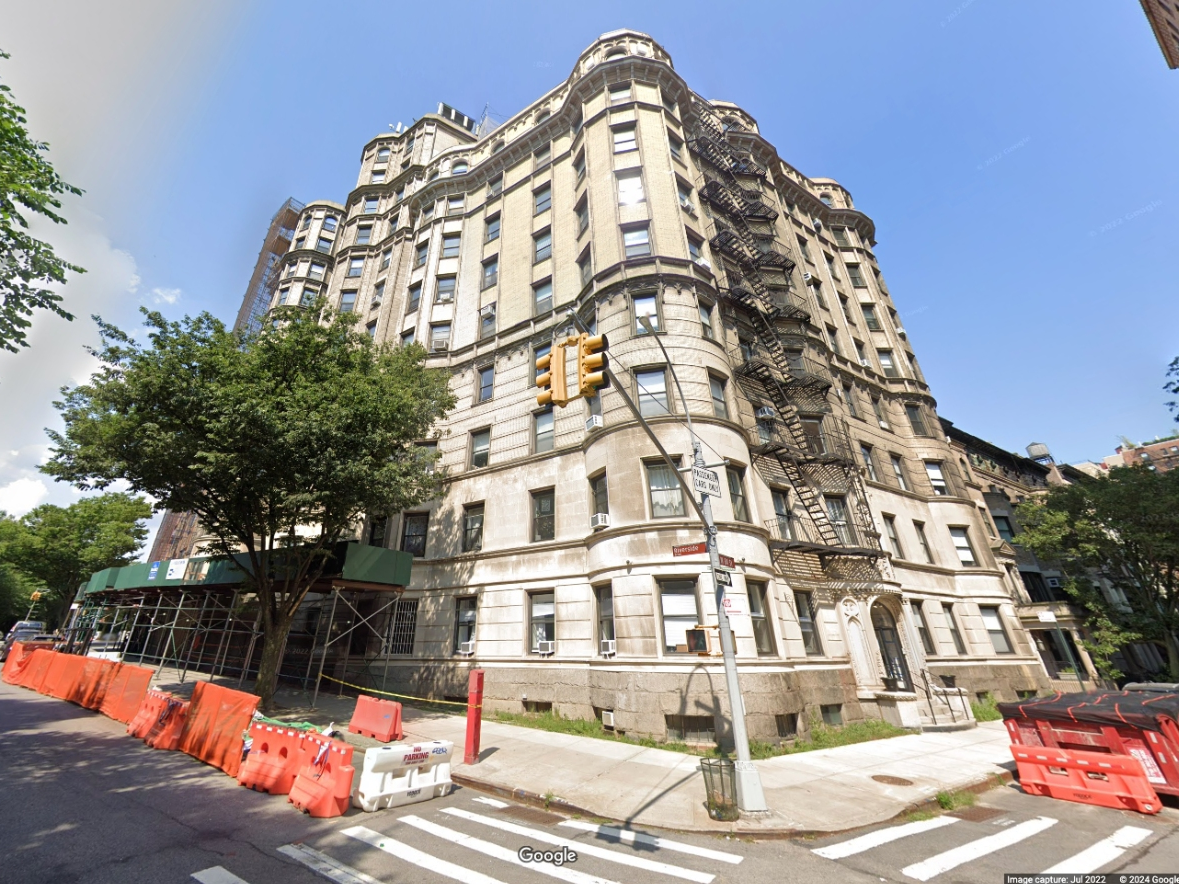Real Estate
Pair Of UWS Rental Buildings Sold At $54M Loss
The two connected Riverside Drive pre-war rental buildings recently sold at a massive 64 percent cut.

UPPER WEST SIDE, NY — Did a pair of 120-year-old Upper West Side buildings really lose $54 million in value over roughly the last decade?
According to the market — and a recent sale — they sure did.
The pair of connected pre-war rental buildings at 120-125 Riverside Dr. recently sold for a whopping 64 percent less than what they were purchased for about 10 years prior.
Find out what's happening in Upper West Sidewith free, real-time updates from Patch.
In 2013, Thor Equities and partner BentallGreenOak purchased the two buildings for $85 million, according to city records.
The buildings contain about 95 units in total, half of which were rent regulated at the time of purchase, according to Crain's New York Business.
Find out what's happening in Upper West Sidewith free, real-time updates from Patch.
But in January, the owners were only able to sell the two buildings for $31 million to Aya Acquisitions — a 64 percent loss, or $54 million.
And that's not accounting for inflation, which means in 2024 dollars, those losses would be even higher.
Some real estate investors this massive haircut could be signs of changing times when it comes to speculative investment in New York City apartment buildings, largely because of a 2019 tenant protection law that limits how rent regulated units — mostly meaning rent-stabilized units specifically — can be deregulated.
Crain's reported that Thor executives immediately announced plans to renovate the market-rate units upon purchase. Those units include a 3,000-square-foot four-bedroom two-unit combination apartment that rented for $17,000 a month last April.
The other side of the multifamily investor playbook is to deregulate rent-regulated units remaining in the apartments.
Prior to 2019 , this was typically done by performing capital improvements on vacant apartments, then raising rents per a formula to help defray the construction costs.
Landlords could also raise rents by 20 percent when units became vacant, a mechanism called the vacancy bonus.
Once the rent reached a certain threshold — around $2,700 in 2018 — the unit would be removed from rent stabilization.
But the 2019 rent laws, also known as the Housing Stability and Tenant Protection Act, made it more difficult for speculative investors to cash in on legacy multifamily.
Capital improvements were limited at a 2 percent rental increase — a reduction from the former maximum of 6 percent— and the vacancy bonus, which tenant advocates said incentivized harassment, was eliminated entirely.
The law, in addition to sharply rising borrowing costs, has helped drag down multifamily prices by 37 percent below 96 Street compared to a decade ago, according to Crain's.
A Bloomberg study also found some rent stabilized buildings have dropped by 50 percent in value.
Landlord interest groups are hoping for a change in the law, though that seems unlikely.
Multiple court challenges to the 2019 legislation — and to rent stabilization more broadly — have been filed, but none have gained much ground.
In October, the Supreme Court declined to hear a case challenging rent stabilization from a major landlord group.
Additionally, THE CITY reported in 2022 that over 60,000 rent-stabilized apartments are being held off the market in a bid to wait for the law to change.
Get more local news delivered straight to your inbox. Sign up for free Patch newsletters and alerts.